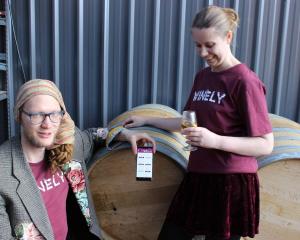
The electricity generator overcame a difficult year with low lake levels and transmission issues to report a net profit of $237 million, down 1% on the $239.6 million reported a year earlier.
Underlying earnings after tax were up 1% to $232 million.
Electricity and gas sales were up 37% at $2.7 billion ($1.99 billion), while other revenue was $26 million ($12 million).
Costs were 50% higher at $2.2 billion ($1.4 billion).
Earnings before interest, tax, depreciation and amortisation were 4.3% higher at $567 million ($544 million), while the pre-tax profit was $336.4 million, 7.7% lower than the $365 million reported a year earlier.
It was a difficult year for Contact, with low lake levels in the second half resulting in wholesale prices for electricity being twice what they were a year earlier.
Contact chief executive David Baldwin said in addition to low lake levels, transmission constraints in the lower North Island and on the interisland HVDC link meant there were times the company could not satisfy South Island demand, forcing it to buy from the spot market "at a significant loss."
"The circumstances of the last year have led to a shift in relative performance between the company's retail and generation segments, reinforcing the value of Contact's integrated business model," he said.
The new financial year had similarly started poorly.
Most of Contact's generation capacity was in the North Island, but transmission constraints meant "a significant portion" of that electricity was unable to be sent to the lower North Island or the South Island, so electricity sometimes had to be bought on the spot market at a loss.
"This has resulted in performance for the first two months of the current financial year being well below expectations," he said.
Those conditions should improve as transmission constraints or South Island demand eases, or as flows in to South Island lakes improve.
Forsyth Barr broker Ken Lister said trading conditions for Contact in the fourth quarter were difficult, and that had affected the profit result.
As a result, Contact was taking a more cautious stance, with its final dividend of 17c a share being 1c a share below Forsyth Barr's expectations.
Normalised earnings per share were 39.3c, down from 40.1c a year earlier.
Mr Baldwin confirmed plans to spend $3 billion on seven projects providing a total of 1400MW of new geothermal, wind, gas and hydro electricity generation.
The projects would be partially funded by $250 million of new debt.
During the year, the company added another 6500 new customers, taking its total retail electricity customer base to 520,000.
The number of retail reticulated natural gas customers was flat at 75,000.














